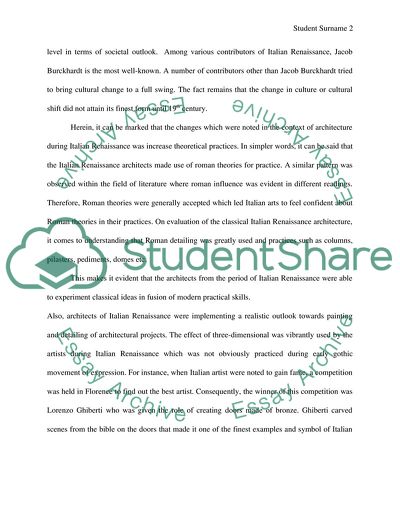Cite this document
(“Why are great Italian Renaissance architects more famous than their Essay - 1”, n.d.)
Retrieved from https://studentshare.org/architecture/1637010-why-are-great-italian-renaissance-architects-more-famous-than-their-great-gothic-predecessors-discuss-how-and-why-the-role-and-image-of-the-architect-changed-during-the-italian-renaissance
Retrieved from https://studentshare.org/architecture/1637010-why-are-great-italian-renaissance-architects-more-famous-than-their-great-gothic-predecessors-discuss-how-and-why-the-role-and-image-of-the-architect-changed-during-the-italian-renaissance
(Why Are Great Italian Renaissance Architects More Famous Than Their Essay - 1)
https://studentshare.org/architecture/1637010-why-are-great-italian-renaissance-architects-more-famous-than-their-great-gothic-predecessors-discuss-how-and-why-the-role-and-image-of-the-architect-changed-during-the-italian-renaissance.
https://studentshare.org/architecture/1637010-why-are-great-italian-renaissance-architects-more-famous-than-their-great-gothic-predecessors-discuss-how-and-why-the-role-and-image-of-the-architect-changed-during-the-italian-renaissance.
“Why Are Great Italian Renaissance Architects More Famous Than Their Essay - 1”, n.d. https://studentshare.org/architecture/1637010-why-are-great-italian-renaissance-architects-more-famous-than-their-great-gothic-predecessors-discuss-how-and-why-the-role-and-image-of-the-architect-changed-during-the-italian-renaissance.


